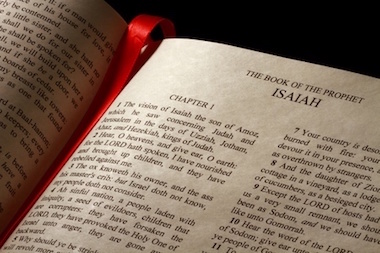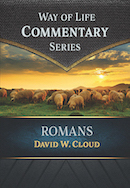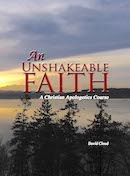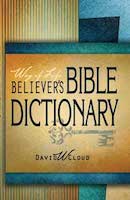866-295-4143, fbns@wayoflife.org
 Few books of the Bible have been attacked so viciously by theologians than Isaiah, and this is not surprising in light of its amazing Messianic prophecies. The devil hates this book. Those who have torn apart Isaiah’s book are no less demonic and wicked than those who tore apart his body!
Few books of the Bible have been attacked so viciously by theologians than Isaiah, and this is not surprising in light of its amazing Messianic prophecies. The devil hates this book. Those who have torn apart Isaiah’s book are no less demonic and wicked than those who tore apart his body! 1. The liberal attack
Until the late 1700s, “virtually all Jewish and Christian scholars accepted Isaiah as one long prophecy by one very gifted writer, Isaiah the son of Amoz” (Bible Believer’s Commentary). “Jewish tradition has uniformly ascribed the entire book to Isaiah. The Dead Sea Scrolls include a complete copy of the Book of Isaiah, thus pointing to its acceptance as one book by the Qumran community in the second century BC. The Septuagint, the Greek translation of the Hebrew Old Testament in the second century BC, gives no indication that the Book of Isaiah was anything other than a single book” (Bible Knowledge Commentary).
In the late eighteenth and nineteenth centuries theological liberals invented the view that Isaiah was written by multiple authors. In 1795, J.C. Doederlein invented the Deutero-Isaiah view, proposing that an unknown man wrote chapters 40-66. In 1892, B. Duhm invented yet a third “Isaiah” for chapters 55-66.
For example, the New Oxford Annotated Bible RSV of 1962, co-edited by Bruce Metzger and Herbert May, has the following comment about Isaiah:
“Only chs. 1-39 can be assigned to Isaiah’s time; it is generally accepted that chs. 40-66 come from the time of Cyrus of Persia (539 B.C.) and later, as shown by the differences in historical background, literary style, and theological emphases. ... The contents of this section [chs. 56-66] (sometimes called Third Isaiah) suggest a date between 530 and 510 B.C., perhaps contemporary with Haggai and Zechariah (520-518); chapters 60-62 may be later.”
“... this theory of dual authorship did not long appease the dissective mania of more modern critics. Ewald discovered seven authors in the book. Yet even seven soon became inadequate for some of the dissectors. In the Cambridge Bible for Schools and Colleges Professor Skinner wrote: ‘The book which bears the name of Isaiah is in reality a collection of prophetic oracles, showing manifest traces of composite authorship, and having a complicated literary history behind it. Not much less than two thirds of its bulk consists of anonymous prophecies...’” (J. Sidlow Baxter).
The theory has been continually modified, but it is still the prominent position among skeptics, and not a few “evangelicals” have been corrupted with this view.
2. The more subtle Neo-Orthodox attack
a. In the twentieth century the older liberal position gave place somewhat to the Neo-Orthodox view of Karl Barth and Emil Brunner, but this view is no friend of the truth. It is just more subtle and deceptive and less forthright in its unbelief. “The so-called ‘Neo-Orthodoxy’ associated with Barth and Brunner, and to a considerable degree including leaders like Tillich, Niebuhr, Kraemer and Edwin Lewis, has sounded the death-knell on the older form of Modernism; yet that older form of it, which will always be associated in our minds with the so-styled ‘Higher Criticism,’ has left a miserable residuum of doubt concerning the literal veracity of the Bible, and a stolid disinclination to accept the definitely supernatural in Scripture. We cannot be have this in mind through all our ensuing studies in the Old Testament prophets. My own reading convinces me that the leaders of the ‘Neo-Orthodoxy’ assume, generally speaking, the results of the more radical ‘Higher Criticism.’ The Higher Critics argued. The Neo-Orthodox assume. The former attacked the historical facts of the Christian faith; the latter now by-pass them as not vitally necessary to Christian faith. There is a brilliantly presented new emphasis, but the inner attitude of mind toward the Bible and the historical facts of Christianity and the miraculous is practically the same as that of the older Modernism” (J. Sidlow Baxter, Explore the Book).
b. It is the Neo-Orthodox view that has permeated “evangelical” scholarship since the 1960s.
“Since the 1960s, many evangelical seminaries and colleges, denominations and organizations have been infected by the prevailing fog of Neo-orthodoxy. Many sincere evangelicals, including many pastors and professors, are Neo-orthodox liberals in regard to Scripture and don't even know there is anything wrong with their view.
“... many evangelical seminaries and colleges sent their bright young scholars to European universities to get their doctorates. A large percentage of these young scholars were infected with liberal and Neo-orthodox views of the Bible; and then they returned to their evangelical schools to teach a Neo-orthodox view of the Bible (what they sincerely believed were the ‘latest, most scholarly’ views) to their students.
“These partially ‘corrupted’ young professors did not openly challenge their denomination's or institution's historic view of inspiration of the Bible. It was more subtle than that and less obvious than the open battle over the Bible of the 1920s and 1930s. Most of these young professors were infected with Neo-orthodoxy; the then fashionable ‘reformed’ liberalism of Swiss theologian Karl Barth. Neo-orthodoxy claims that the human words of the Bible are not the very words of God, but rather are a fallible human ‘witness’ to the words of God and are therefore in a sense, the ‘Word’ of God to man. In some cases they claim that the words of the Bible ‘become’ the Word of God to man at a particular existential moment when that man senses God speaking to him. Others have spoken of the Bible ‘containing’ the Word of God.
“Since most Neo-orthodox theologians attempt to honor God’s word in some sense, their presentation to their students of their existential and relativistic re-interpretation of the Bible does not appear to be ... an attack upon the Bible. But, since most Neo-orthodox men accept most of the higher critical theories of theological liberalism and since they usually believe (with Kant and Barth) that human language is incapable of communicating absolute, unchanging, and inerrant truth from God to man, therefore they are essentially liberals in their view of scripture” (Jay Grimstead, “How the International Council on Biblical Inerrancy Began”).
- Neo-orthodoxy assumes many views of the older liberalism, that Moses did not write the Pentateuch, that Isaiah did not write Isaiah, that Daniel was not written by the prophet Daniel, that there was no a universal flood, etc.
- Neo-Orthodoxy refuses to accept the Old Testament as the infallible Word of God, historically accurate in every detail. Rather the Old Testament is the Word of God only in a general sense and its contains historical and scientific mistakes. They try to disassociate the Bible’s statements on such things as history and science and anthropology from its statements on “spiritual” matters.
- Neo-Orthodoxy claims that human language is incapable of communicating absolute, unchanging, eternal, inerrant truth.
- Neo-Orthodoxy wants to be considered a Bible-believing position even though it is not.
The refutation of the attack upon Isaiah
1. The critical view ignores 2,000 years of history in which Isaiah was always considered one book written by one author.
2. The critical view makes the book of Isaiah into a lie. The book begins with these words: “The vision of Isaiah the son of Amoz, which he saw concerning Judah and Jerusalem in the days of Uzziah, Jotham, Ahaz, and Hezekiah, kings of Judah.” If the book is not the work of this historical prophet, then this statement is untrue.
3. The denial of Isaiah’s authority is naturalistic. It is based on the unbelieving view that the Bible is not supernaturally inspired and does not contain predictive prophecy. Consider some examples of this view:
- The German liberal Johann Doederlein said in 1789 that Isaiah 40-66 were written during the Babylonian exile, long after the death of the historic prophet, because “an eighth century writer could not have predicted the fall of Jerusalem (587 BC), much less the rise of Cyrus the Great, who restored the exiles in 538 BC” (“Multiple Authorship Theories of Isaiah,” Biblical Resources).
- “Isaiah, at the Assyrian epoch, was not able to announce the deliverance form the captivity, by Cyrus, seeing that in his time that captivity had no existence” (August Knobel, 1807-1863).
- “At the time of Isaiah the kingdom of the Chaldeans had as yet no existence; it began to exist only in 625 BC, how then would the prophet have been able to represent it as near to its decline?” (Johann Wilhelm Vatke, 1806-1882).
- “A prophecy in which Cyrus is called by his name is not naturally the work of Isaiah, who could not know in advance either the exile of the people to Babylon, or the deliverance from that exile by Cyrus” (Theodor Noldeke, 1836-1930).
The “evangelical” scholars that have bought into the liberal perspective claim that they still have a “high view” of the book of Isaiah, but they are deceiving themselves in Neo-Orthodox delusions. Those who have been redeemed by Christ’s blood and born again by His Spirit and know the God of creation have no problem believing that the Bible is what it claims to be and see no reason to give any credence whatsoever to the multiple author perspective.
4. The conclusions of the critics are contradictory and have been in continual flux for a century and a half. First there were said to be two Isaiahs, then three, then seven, then an entire school of Isaiahs, etc. It is obvious that they don’t know what they are talking about and have no absolute authority. The only thing they agree on is their rejection of book of Isaiah as what it claims to be.
5. The primary basis for claiming that the book was written by more than one person is an analysis of the writing style. The critics say that they can discern the style of multiple individuals, but this has been refuted by many believing scholars. Any difference in style can be explained by the fact that the subject of the last part of Isaiah is different than the subject of the first. See, for example, Explore the Book by J. Sidlow Baxter, Commentary on the Old Testament by Merrill Unger, A Survey of Old Testament Introduction by Gleason Archer, and An Introduction to the Old Testament by Edward Young.
6. The Jewish historian Josephus, writing in the first century, said that Cyrus was influenced by the prophecy of Isaiah, which tells us that it already existed before Cyrus was born and was therefore supernaturally written. Josephus wrote, “Thus saith Cyrus the king: ‘Since God Almighty hath appointed me to be king of the habitable earth, I believe that He is that God whom the nation of the Israelites worship; for, indeed, He foretold my name by the prophets, and that I should build Him a house at Jerusalem, in the country of Judaea.’ This was well known to Cyrus by his reading the book which Isaiah left behind him of his prophecies” (quoted from J. Sidlow Baxter, Explore the Book, p. 233).
7. Isaiah is quoted in at least 23 New Testament passages, and in every case Isaiah is cited as one historic prophet and his writings are cited as divinely inspired. There are quotations from every part of Isaiah: from chapters 1, 6, 9, 10, 11, 28, 29, 40, 42, 53, 61, and 65. “There is therefore ample New Testament authority for believing that Isaiah was the sole author of the collection of prophecies bearing his name. ... Modern literary taste and scholarship, however, repudiate these clear testimonies, including that of Him Who is ‘the Faithful and True Witness,’ preferring the cloudy creations of their own imaginations” (W.J. Hocking, Preface to the fourth edition of William Kelly’s Exposition of the Book of Isaiah, 1946).
Mt.3:3 - Isa. 40:3
Mt.4:14-16 - Isa. 9:1-2
Mt.8:17 - Isa. 53:4
Mt.12:17-21 - Isa. 42:1-4
Mt.13:14-15 - Isa. 6:9-10
Mt.15:7-8 - Isa. 29:13
Mk. 7:6 - Isa. 29:13
Mk. 15:28 - Isa. 53:12
Lu. 3:4-6 - Isa. 40:3-5
Lu. 4:17-19 - Isa. 61:1-3
Joh. 1:23 - Isa. 40:305
Joh. 12:38 - Isa. 53:1
Joh. 12:39-40 - Isa. 6:9-10; Isa. 29:10; 44:18
Joh. 12:41 - Isa. 6:1
Acts 8:28-33 - Isa. 53:7-8
Acts 28:25-27 - Isa. 6:9-10
Rom. 9:27-28 - Isa. 10:20-23
Rom. 9:29 - Isa. 1:9
Rom. 10:11 - Isa. 28:16
Rom. 10:16 - Isa. 53:1
Rom. 10:20-21 - Isa. 65:1-2
Rom. 15:12 - Isa. 11:1, 10
1 Pet. 2:6 - Isa. 28:16
8. Isaiah is called Scripture in the New Testament (Mk. 15:28 quoting Isaiah 53:12; Lu. 4:17-21 quoting Isaiah 61:1-3; Acts 8:32-33 quoting Isaiah 53:7; Rom. 10:11 and 1 Pet. 2:6 quoting Isa. 28:16). Christ taught that the Scripture cannot be broken (Joh. 10:35). Note that both major parts of Isaiah are cited as Scripture.
9. Jesus Christ viewed the Old Testament writings as divinely inspired throughout. He cited every part of the Old Testament (the law, the writings, and the Psalms) as divinely inspired and as pointing prophetically to Him (Lu. 24:44), which authenticates the supernatural character of the Old Testament in the clearest manner for those who honor Jesus Christ as the Son of God. He called Himself “the faithful and true witness” (Rev. 3:14), and we know that to be true. “Jesus Christ assumed that Isaiah was the author of the whole book. Jesus was given the “scroll of the Prophet Isaiah” (Lu. 4:17-19) which He unrolled and from which he read Isa. 61:1-2” (Bible Knowledge Commentary).
10. John’s Gospel (Joh. 12:38-41) quotes from both sections of Isaiah (Isa. 53:1 and Isa. 6:9) and says that both parts were written by the same prophet named Isaiah.
11. Isaiah’s prophecies prove the book’s infallible inspiration.
In the end, it clear that Isaiah was written by a prophet of God who could see the future, which proves its divine inspiration.
Take Isaiah 53. We believe that it was written at least 700 years before Christ by the historic prophet Isaiah during the days of Uzziah, Jothan, Ahaz, and Hezekiah. But even the staunchest critic cannot deny that it was written at least 200 years before Christ, because we have the Great Isaiah Scroll from the Dead Sea caves dating to that time.
Isaiah 53 (taking just one prophecy) plainly describes Christ’s rejection (Isa. 53:3), sacrificial atonement (Isa. 53:5-6), submission to His murderers (Isa. 53:7), silence before His accusers (Isa. 53:7), the injustice He endured (Isa. 53:8), His death (Isa. 53:8), burial in a rich man’s tomb (Isa. 53:9), sinlessness (Isa. 53:9), resurrection (Isa. 53:10), His justification of believing sinners (Isa. 53:11), and exaltation (Isa. 53:12).
Only by divine inspiration could Isaiah see the details of Christ’s suffering hundreds of years ahead of his time.
- Receive these reports by email
- www.wayoflife.org
______________________
Sharing Policy: Much of our material is available for free, such as the hundreds of articles at the Way of Life web site. Other items we sell to help fund our expensive literature and foreign church planting ministries. Way of Life's content falls into two categories: sharable and non-sharable. Things that we encourage you to share include the audio sermons, O Timothy magazine, FBIS articles, and the free eVideos and free eBooks. You are welcome to make copies of these at your own expense and share them with friends and family. You may also post parts of reports and/or entire reports to websites, blogs, etc as long as you give proper credit (citation). A link to the original report is very much appreciated as the reports are frequently updated and/or expanded. Things we do not want copied and distributed are "Store" items like the Fundamental Baptist Digital Library, print editions of our books, electronic editions of the books that we sell, the videos that we sell, etc. The items have taken years to produce at enormous expense in time and money, and we use the income from sales to help fund the ministry. We trust that your Christian honesty will preserve the integrity of this policy. "For the scripture saith, Thou shalt not muzzle the ox that treadeth out the corn. And, The labourer is worthy of his reward" (1 Timothy 5:18). Questions? support@wayoflife.org
Goal:Distributed by Way of Life Literature Inc., the Fundamental Baptist Information Service is an e-mail posting for Bible-believing Christians. Established in 1974, Way of Life Literature is a fundamental Baptist preaching and publishing ministry based in Bethel Baptist Church, London, Ontario, of which Wilbert Unger is the founding Pastor. Brother Cloud lives in South Asia where he has been a church planting missionary since 1979. Our primary goal with the FBIS is to provide material to assist preachers in the edification and protection of the churches.
Offering: Offerings are welcome if you care to make one. If you have been helped and/or blessed by our material offerings can be mailed or made online with with Visa, Mastercard, Discover, or Paypal. For information see: www.wayoflife.org/about/makeanoffering.html.





